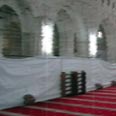
Exclusive: Temple Mount tour
Ynetnews presents rare, exclusive video of holy site, currently closed to Jews, after Israeli able to sneak camcorder into Mount. Prominent archeologist who watched video says Muslim renovation did not damage shrine
Temple Mount tour (Video: Ron Peled)
The images feature a series of well-known sites including Solomon’s Stables, al-Aqsa Mosque, and the Dome of the Rock.Ron Peled, 34, a computer professional who shot the video, says “to walk here, to roam under the Temple Mount, the site of the Temple my forefathers longed for, is the realization of a dream.”
Peled, a former tour guide, is well aware of the immense significance of the rare images of sites that are normally only open to Muslim worshippers.
“As a Jew who likes archaeology and history, I think the value of those images is enormous,” he said. “Even though the sentence ‘Temple Mount is in our hands’ (made famous during the Six-Days War) is inaccurate these days, this video puts it in our hands for a few minutes. Yet whoever wasn’t there cannot quite grasp it.”
The video also shows the immense renovation project undertaken by Muslims in the mosques below the Mount, an effort that is still ongoing. At this time, the huge area can accommodate tens of thousands of Muslim worshippers.
Meanwhile, the site has been the focus of an ongoing debate between archaeologists regarding possible damage to the holy shrine as a result of the renovation efforts.
Distinguished archeologist Ze’ev Herzog, who has closely dealt with the Temple Mount, watched the video and said it only served to reinforce his stance that Muslim work did not cause any significant damage to the site.
“The Waqf’s renovation activity did not cause archeological damage in my estimation,” he told Ynet. “There’s no chance there were ancient archeological remnants in the area.”
The Waqf has been removing dirt from the site, Herzog says, but notes this dirt was only brought at a later period.
“According to the video, the Waqf in fact reconstructed the site as it was during the crusader period and added a few accessories (such as fans and electricity) to make it a convenient prayer house,” he said.










